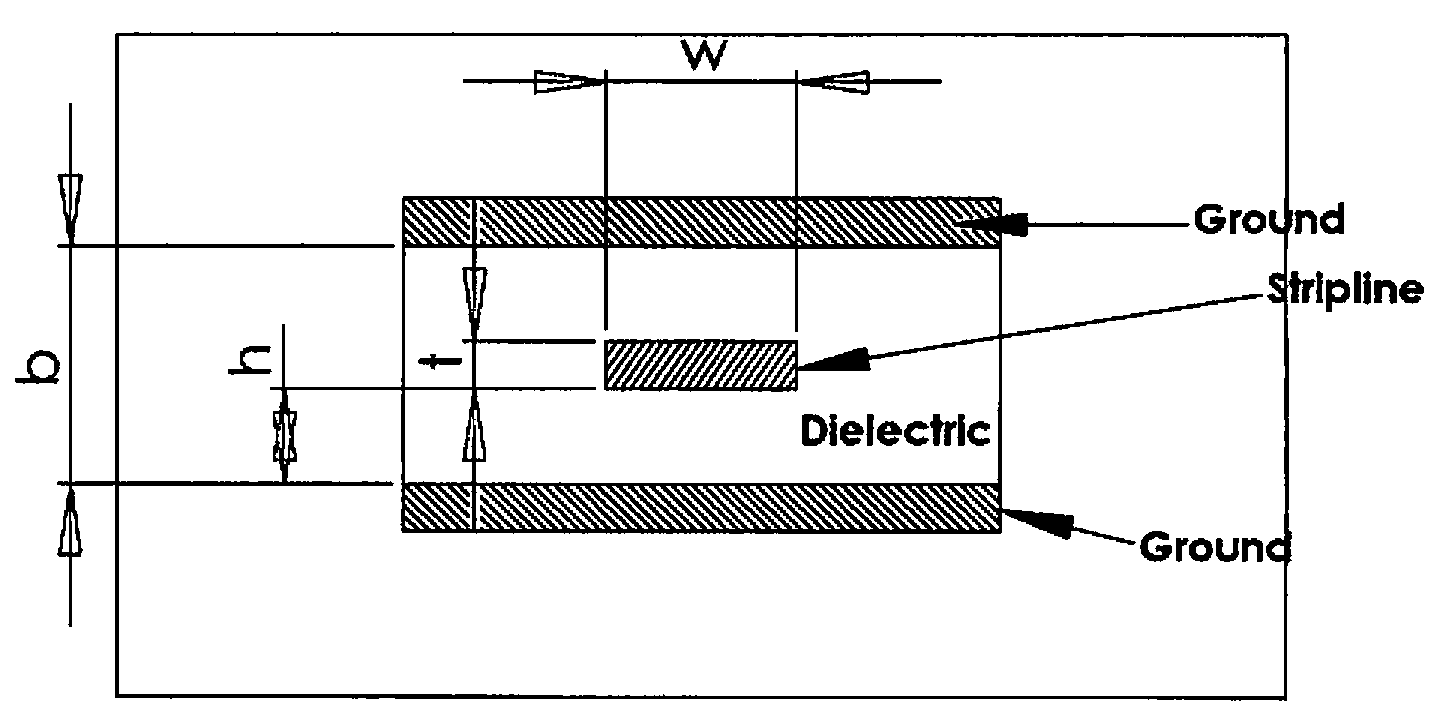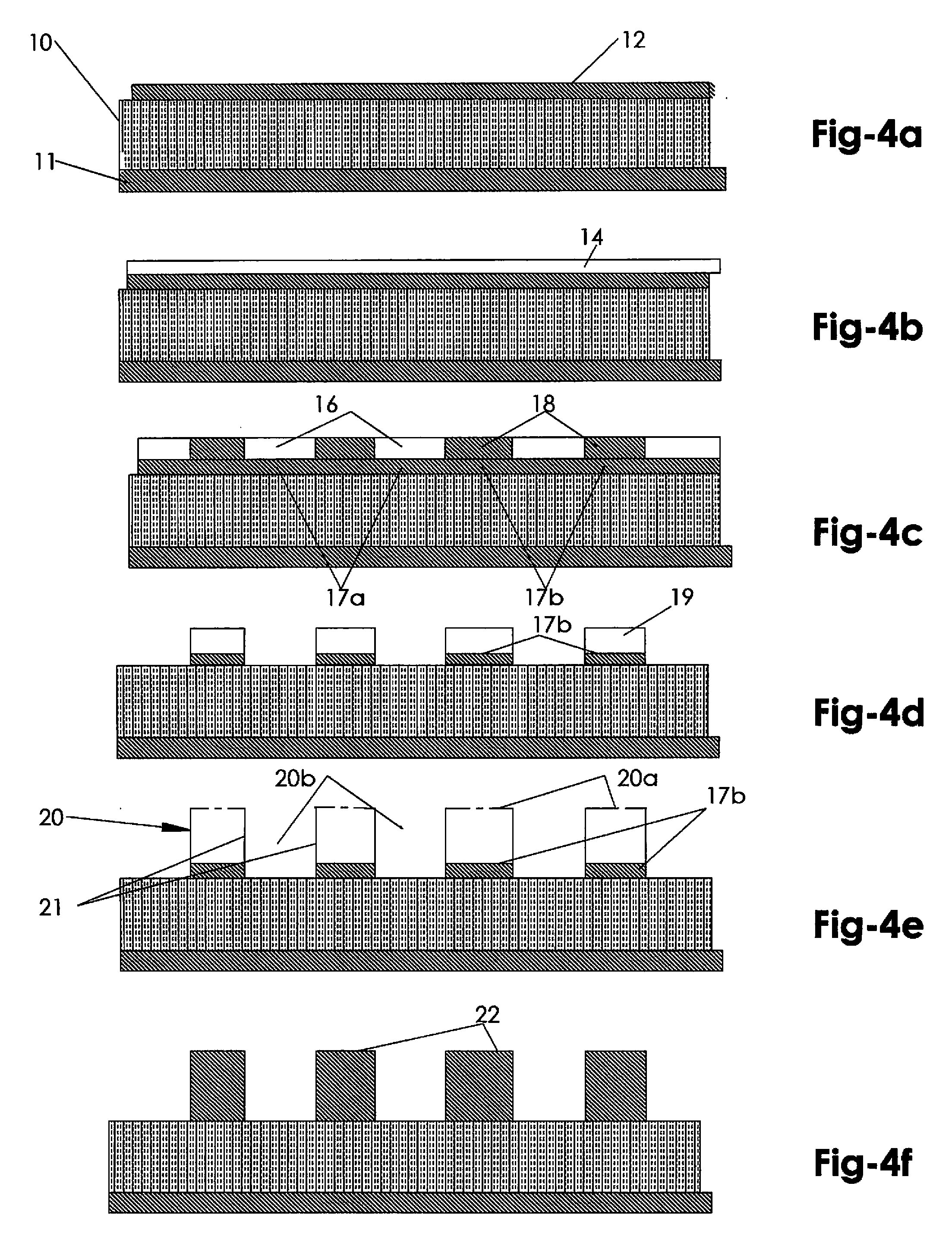Process for Making a Multilayer Circuit Device Having Electrically Isolated Tightly Spaced Electrical Current Carrying Traces
a technology of tightly spaced electrical current and multi-layer circuit boards, which is applied in the direction of ceramic shaping apparatus, electric devices, special surfaces, etc., can solve the problems of increasing the danger of accidental bridging adjacent pins with solder, affecting the signal quality of high-speed electronic circuits, and affecting the quality of electrical circuits
- Summary
- Abstract
- Description
- Claims
- Application Information
AI Technical Summary
Problems solved by technology
Method used
Image
Examples
Embodiment Construction
[0034]Referring now to FIG. 4a, a planar substrate is shown generally at 10 having a particular dielectric constant suitable for the application described. Board 10 may be of a ceramic material, a woven epoxy glass material known as FR4, or any other suitable substrate material. The substrate board may have a metal layer of a material such as copper plated on its bottom surface as indicated at 11
[0035]In accordance with a first embodiment of the present invention wherein circuit traces are to be provided by electroplating, a first step is to lay down a thin metallic seed layer 12 of a suitable material, such as copper or silver for example, on the upper surface of the substrate by printing, spraying, using an electroless process, etc. The seed layer 12 is a very thin plating of about 1 micron thickness with high conductive quality and good adherence to the substrate 10. This layer will serve as a foundation for the subsequent plating process.
[0036]The next step, as illustrated in FI...
PUM
| Property | Measurement | Unit |
|---|---|---|
| width | aaaaa | aaaaa |
| dielectric constant | aaaaa | aaaaa |
| thickness | aaaaa | aaaaa |
Abstract
Description
Claims
Application Information
 Login to View More
Login to View More - R&D
- Intellectual Property
- Life Sciences
- Materials
- Tech Scout
- Unparalleled Data Quality
- Higher Quality Content
- 60% Fewer Hallucinations
Browse by: Latest US Patents, China's latest patents, Technical Efficacy Thesaurus, Application Domain, Technology Topic, Popular Technical Reports.
© 2025 PatSnap. All rights reserved.Legal|Privacy policy|Modern Slavery Act Transparency Statement|Sitemap|About US| Contact US: help@patsnap.com



